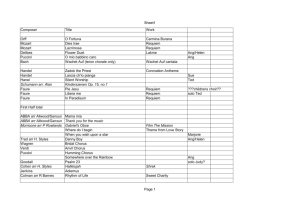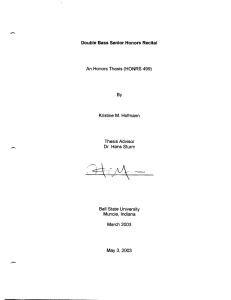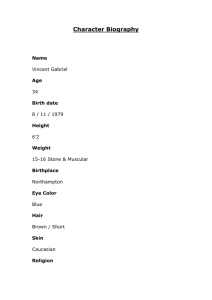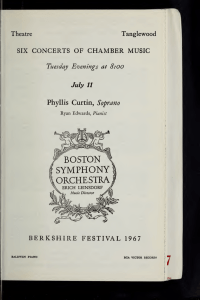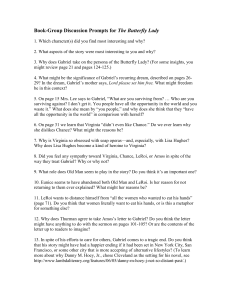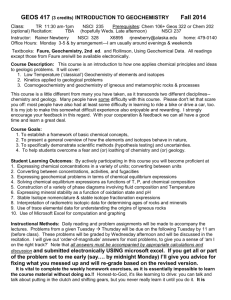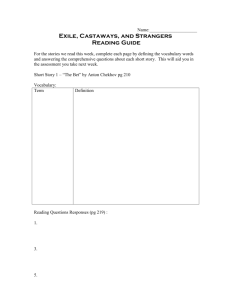Composer Power Point
advertisement
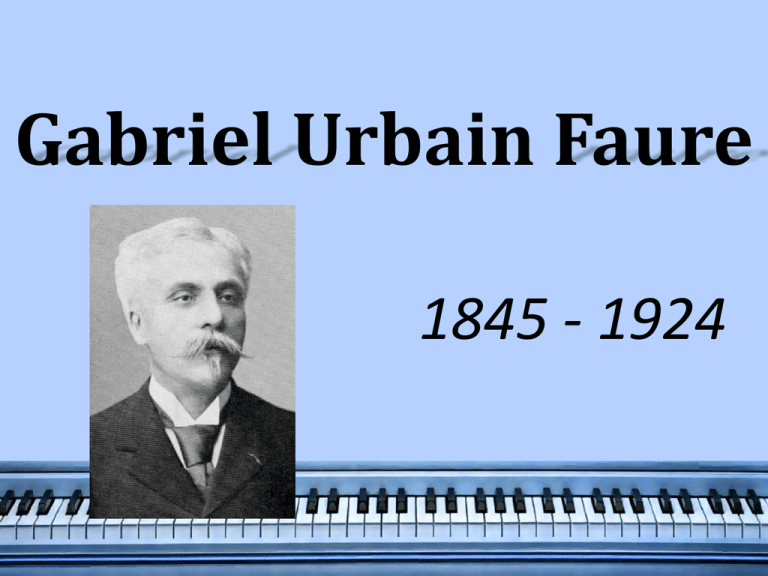
Gabriel Urbain Faure 1845 - 1924 Gabriel Faure Early Years • Gabriel Urbain Fauré was born in Pamiers, Ariège, Midi-Pyrénées, to Toussaint-Honoré Fauré and Marie-Antoinette-Hélène Lalène-Laprade. • He was the 5th of 6 children • Fauré was sent to live with a foster-nurse for four years. • From the time he was 9 until he was 20 he studied at Ecole Niedermeyer Conservatory in Paris which specialized in religious music and organ studies. GABRIEL FAURE EARLY YEARS •Faure was one of its first students at the conservatory. •He studied under Camille Saint-Saëns and Ecole Niedermeyer. •Camille Saint-Saëns was the one who introduced Faure to contemporary music. Gabriel Faure • After he left school he became the chief organist at the Church of Saint-Sauveurthe. Four years later he got the post of assistant organist at the church of Notre-Dame de Clignancourt. • He was there for only a few months because of the outbreak of the Franco-Prussain War in 1870, he volunteered for military service. He was part of the action in the Siege ofParise and saw action at Le Bourget, Champingy and Creteil. Gabriel Faure • In Switzerland he taught at the transported École Niedermeyer. • When he returned to Paris in October 1871, he was assistant organist at Saint-Sulpice as an accompanist to the choir. • In 1874, Fauré stopped working at Saint-Sulpice and began to fill in at the Église de la Madeleine for SaintSaëns. • In 1877, Saint-Saëns retired and Fauré became choirmaster. Gabriel Faure • He succeeded in gaining new jobs after the teachers retired and taught many subjects. • Eventually in 1905 he became the director of the Paris Conservatoire. • In 1920 he retired and wrote music until his death in 1924 from pneumonia • He was given a state funeral at the Église de la Madeleine and is buried in the Cimetière de Passy in Paris. Gabriel Faure Marriage • In 1877 he was engaged to Marianne Viardot until she broke it off leaving him heartbroken. • In 1883, He married Marie Frement and they had two kids. • In his marriage he frequently had affairs, including one with Emma Bardac who was to become Claude Debussy second wife. Gabriel Faure Facts • He formed the Societe Nationale Musique. • He taught many people who became composers. • In 1865, when he was still in school, Faure wrote his first piece ‘Canitque de Jean Racine’ and won first place for an award. • It wasn’t until the end of his life when his music got famous. Gabriel Faure • Fauré avoids standard harmonies • Faureis said to be one of the foremost French composers of his generation, and his musical style influenced many 20th century composers. GABRIEL FAURE TYPES OF WORKS •Stage Works •Orchestral Music •Vocal •Chamber •Church music •Piano music Gabriel Faure Famous for: His most famous pieces are • Song “Aprex un reve” • Song “Clair de lune” • Requiem Requiem Requiem • Faure started writing Requiem in 1887 • The version of the song today is not the original that was made in 1887. • The original contain only: Introit and Kyrie Sanctus Pie Jesu Agnus Dei In Paradisum Requiem • The first performance was on January 16, 1888 in La Madeleine in Paris. • He in 1889 added an Offertoire, and added a setting of the Libera Me. • The first performance of the new version was on January of 1893 in the Madeleine. Requiem • Unlike other Requiems Gabriel Faure’s Requiem was not made composed due to a death and many people have questioned his Requiem because it was so unusual. • Gabriel Faure wrote a fellow conductor Maurice Emmanuel who had asked about Requiem. This is his letter: Libera Me Free me, Lord, from eternal death, on that day of dread, when the heavens and earth shall move, when you shall come to judge the world by fire. I am made to tremble, and to fear, when destruction shall come, and also your coming wrath. O that day, that day of wrath, of calamity and misery, the great and exceedingly bitter day. Grant eternal rest to them, Lord, and let perpetual light shine on them. Letter to Maurice Emmanuel Dear sir and friend, My requiem was composed just so... as a joke, if I may express myself thus! It was performed for the first time in La Madeleine for the funeral of some or the other parisher around 1890. I cannot tell you any more! Sincerely, Gabriel Fauré If my memory does not fail me the deceased of 1890 was a M. le Soufaché, which is not at all an ordinary name! Gabriel Faure said "It has been said that my Requiem does not express the fear of death and someone has called it a lullaby of death. But it is thus that I see death: as a happy deliverance, an aspiration towards happiness above, rather than as a painful experience. The music of Gounod has been criticized for its overinclination towards human tenderness. But his nature predisposed him to feel this way: religious emotion took this form inside him. Is it not necessary to accept the artist's nature? As to my Requiem, perhaps I have also instinctively sought to escape from what is thought right and proper, after all the years of accompanying burial services on the organ! I know it all by heart. I wanted to write something different." Gabriel Faure • It want until later in life when his music got the noticed it deserved. • As he grew older Faure discovered that he was going deaf but it didn’t stop him and he continue to write music. • He retired in 1920 and died in 1924 from pneumonia. Sources • http://noteworthy.zasu.us/composers/Faure/ Gabriel_Faure_1864.jpg • http://sws1.bu.edu/skocpol/Blanche/faure.jpg • http://www.musicscores.com/graphics/fa_48_4_vo.gif • http://www.classicalcomposers.org/comp/faure Sources Continue • http://www.classiccat.net/faure_g/biography. php#Early_years • http://www.classical.net/music/comp.lst/faur e.php • http://www.naxos.com/person/Gabriel_Faure /26049.htm • http://members.macconnect.com/users/j/jim bob/classical/Faure_Requiem.html
